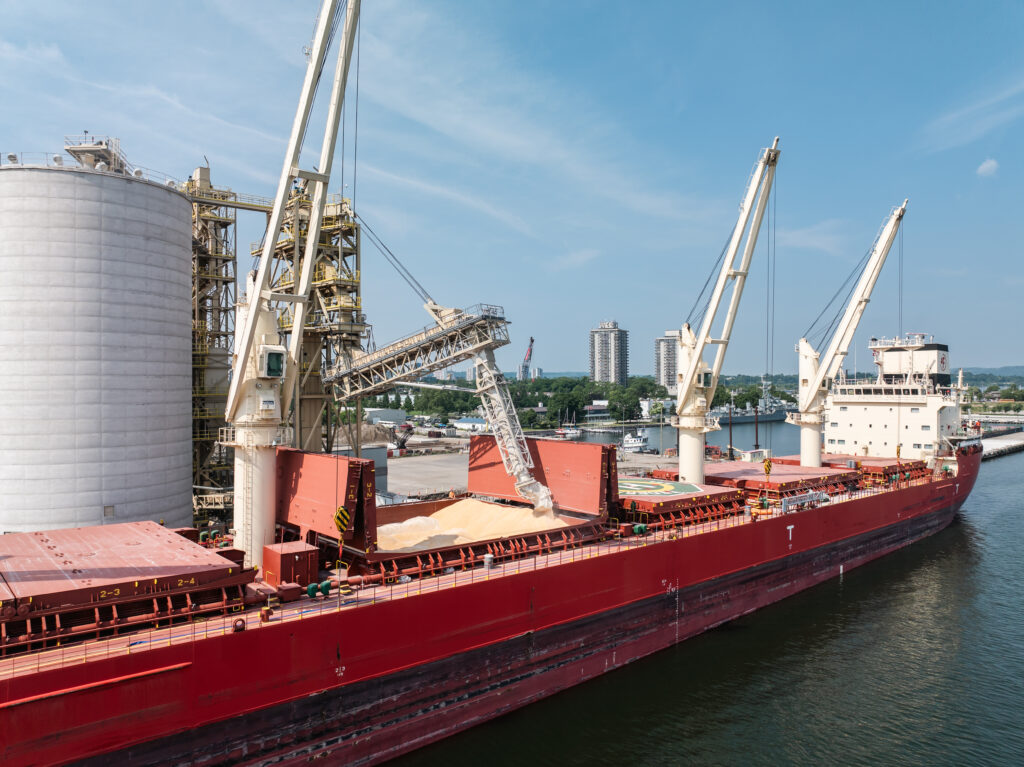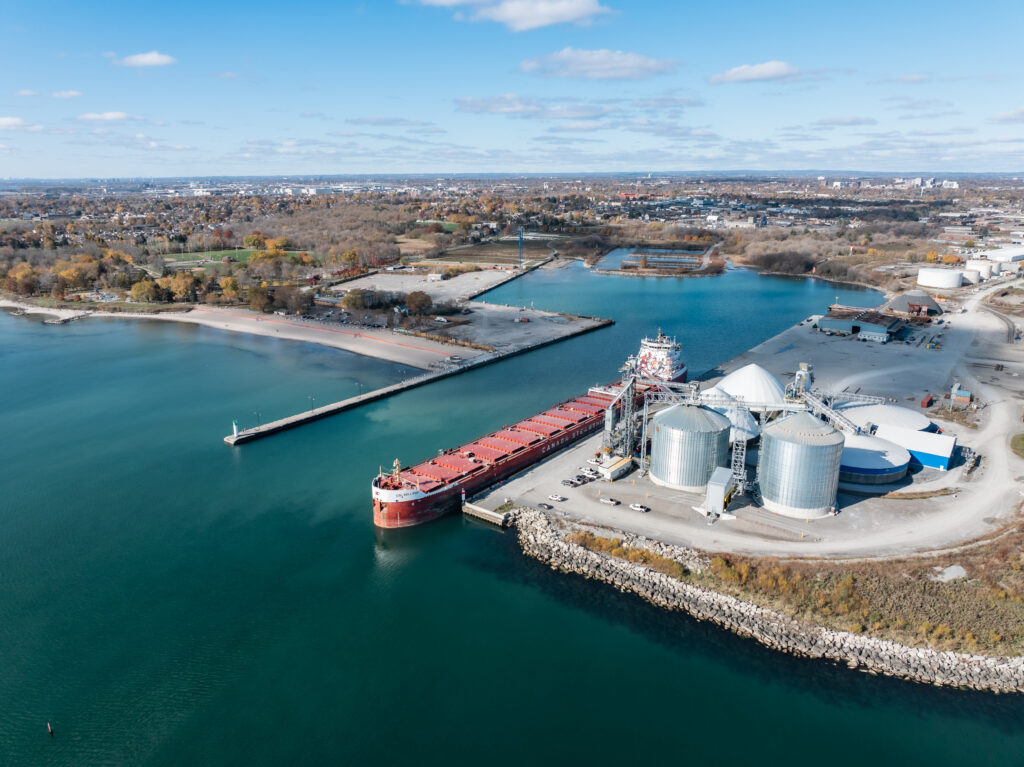As the 2025 marine shipping season has progressed, grain traffic has remained the dominant story of the year per statistics reported by the St. Lawrence Seaway Management Corporation. As of the end of June, total traffic had reached approximately 12.7 million tonnes, representing an increase of approximately 4% year over year when compared to the same period last year. Most notably, the movement of North American grain was up almost 28% year over year, due in part to increased global demand resulting from lost production caused by the ongoing conflict in Ukraine.
A multitude of CMC members have had a hand in bringing this foundational food commodity to world markets, ranging from producers, to ship operators, to ports and terminals. One key player in this vital supply chain is HOPA Ports, which is a central conduit for the activity – so much so that it recently completed a $35 million grain terminal expansion. This expansion offers a total of 20,000 metric tonnes of storage capacity and features a vessel loading rate of up to 12,000 MT per day, ensuring fast and efficient grain movement. Additionally, a new dual truck unloading structure is capable of receiving 700 MT per hour, which has streamlined deliveries and minimized any potential for delays.
The additional capacity and enhanced loading speeds is especially responsive to the needs of southern Ontario farmers, as the facility’s location and service capabilities shorten travel times and reduce costs associated with the movement of these farmers’ product.
“As we continue building the broader HOPA Ports ecosystem, connecting regional businesses and strengthening local supply chains, making this facility at the Port of Oshawa work for regional farmers is our priority,” said Ian Hamilton, President & CEO at HOPA Ports. “We’ve invested in quality infrastructure in Oshawa, improving the terminal’s efficiency from the front gate right onto the vessel, and we’re thrilled that the port is contributing to the resiliency and reliability of Canadian agricultural supply chains.”
Ontario’s grain exports are projected to grow by two million metric tonnes over the coming decades, with 300,000 MT expected from the Port of Oshawa’s catchment area alone.
“This expansion is complemented by additional investment at the Port of Hamilton’s Parrish & Heimbecker terminal, where two new storage silos are supporting essential feed ingredient flows, alongside the construction of a third flour mill,” continued Hamilton. “As of June, agricultural traffic continues its upward trend with a 38% year-to-date increase, representing nearly 282,000 MT of grain moving through the Port network and boosting overall tonnage by 6% compared to the same period last year.”
HOPA’s responsiveness to customer needs and dedication to continuous improvement are clearly making the port authority a preferred partner for many businesses, as cargoes handled through HOPA’s port network in 2024 represented 31% of the total cargo that transited the Great Lakes-St. Lawrence Seaway System, and HOPA’s proportion of overall Seaway volumes has been increasing over the past several years.
“Members of the Chamber of Marine Commerce have shown real commitment to innovating and adapting their operations to offer businesses the strongest possible supply chains, and the developments happening at HOPA Ports are a great example,” noted Jason Card, Director of Communications for the Chamber of Marine Commerce. “The new Federal Government led by Prime Minister Carney committed to the creation of new Trade Diversification Corridor Fund to help make Canada’s economy the strongest in the G7, and I am confident that prioritizing marine projects and supporting forward thinking organizations like HOPA Ports and its fellow CMC members will yield the greatest positive impacts from this initiative.”



Key Facts
Hamilton Oshawa Port Authority has been recognized as one of Canada’s top employers for the last three years.
In addition to continuous improvement in its facilities, HOPA Ports is engaged in thought leadership, having engaged with the McMaster Institute for Transportation & Logistics to produce a study highlighting how exploring short sea shipping services on the Great Lakes could reduced highway and border congestion, lower greenhouse gas emissions, and improve supply chain resilience.
In July of 2023, an independent study by Martin Associates was released, confirming the tremendous importance of marine shipping on the Great Lakes and St. Lawrence Seaway and coastal and arctic regions to the North American economy. The study revealed that the industry:
Video Assets
Port of Oshawa Expanded Grain Terminal
HOPA Connects Prairie Wheat to Ontario Tables
The Chamber of Marine Commerce (CMC) is a bi-national association that represents diverse marine industry stakeholders including major Canadian and American shippers, ports, terminals and marine service providers, as well as Canadian domestic and international ship owners. The Chamber advocates for safe, sustainable, harmonized and competitive policy and regulation that recognizes the marine transportation system's significant advantages in the Great Lakes, St. Lawrence, Coastal and Arctic regions.
Media Contact:
Jason Card
Chamber of Marine Commerce
jcard@cmc-ccm.com
(613) 447 5401